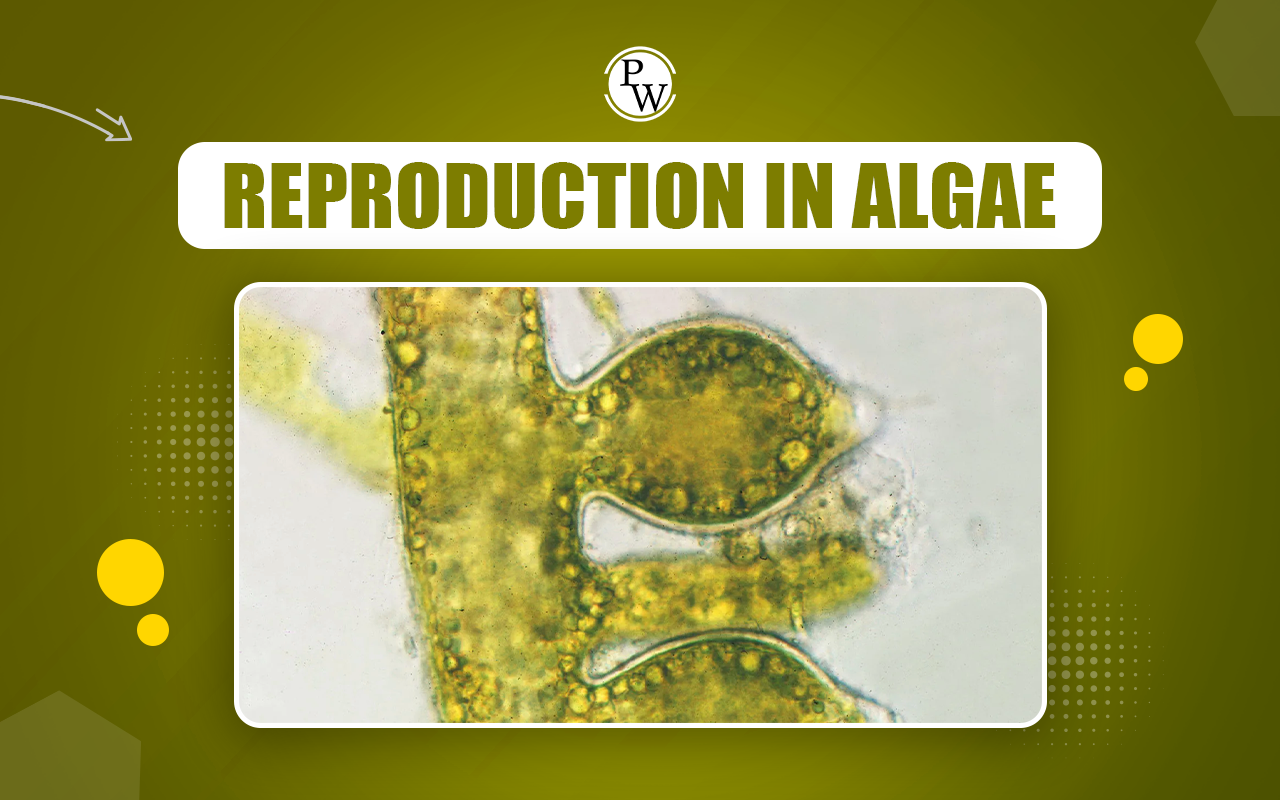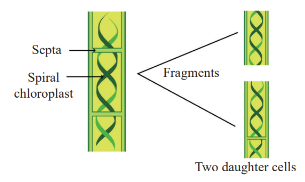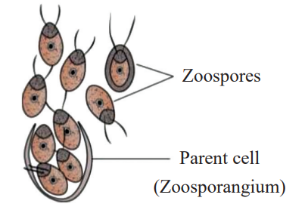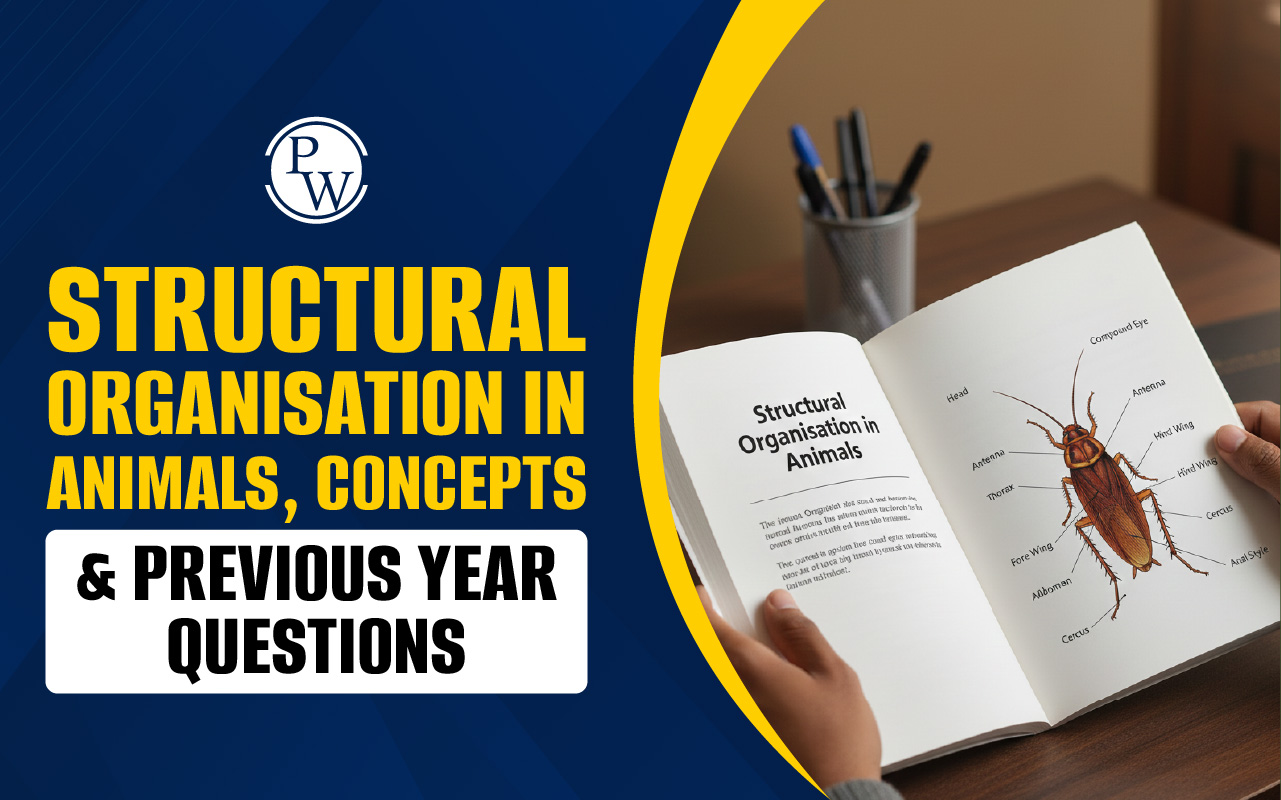

Reproduction in algae is an essential process through which algae species produce offspring, ensuring their survival and continuity. Algae, a diverse group of photosynthetic organisms found in water bodies and moist environments, reproduce through three main types: vegetative, asexual, and sexual reproduction . Each type has unique methods and structures, allowing algae to adapt to various environments and conditions. Understanding these reproductive methods is significant for students studying biology, particularly for NEET exam preparation, as it reveals the complexity and diversity of life forms in aquatic ecosystems.
Also Check:
- Free Toppers Notes for NEET
- Free NEET Lectures by PW Expert Faculties
- NEET Study Material, Free Sample Papers, Book, Toppers Notes, PYQs
Reproduction in Algae Intro
Algae are simple, plant-like organisms commonly found in water bodies such as ponds, rivers, lakes, and oceans. Although algae lack the complex structures seen in higher plants, they play a vital role in ecosystems, primarily through photosynthesis , where they produce oxygen and serve as a food source for various aquatic organisms. Algae can be found in various forms—ranging from microscopic, single-celled organisms to large seaweeds and kelps.
Definition of Algae
Algae refers to a broad and diverse group of aquatic organisms that range from single-celled microbes to large, multicellular structures. Typically photosynthetic, algae capture sunlight to produce their own food and thrive in various water environments, including saltwater, freshwater, and brackish (a mix of salt and fresh water).Types of Reproduction in Algae
Algae reproduce using three main methods: vegetative reproduction, asexual reproduction, and sexual reproduction. Each method is essential for the growth and propagation of algal species.Vegetative Reproduction in Algae
Vegetative reproduction occurs when new individuals are formed directly from the vegetative parts of the algae without changes in the protoplast. This process can happen through several methods:- Simple Cell Division : This method is common in unicellular algae, where a single cell divides to form two new cells. An example of this is Synechococcus, which belongs to the Cyanophyceae group.
- Fission : In this method, a cell divides by forming a deep constriction, known as septum formation, on the sides of the cell. Fission is commonly seen in diatoms and other unicellular algae.
- Fragmentation : Fragmentation is frequently observed in filamentous algae from the Chlorophyceae and Phaeophyceae groups. In this process, the filament breaks into one or more fragments, with each fragment capable of growing into a new plant. Common examples include Spirogyra, Ulothrix, Zygnema, Oscillatoria, Oedogonium, and Cylindrospermum.

Asexual Reproduction in Algae
Asexual reproduction involves the multiplication of species through specialized reproductive cells called asexual spores. Asexual reproduction can occur through the following methods:- Zoospores: Zoospores are flagellated, motile spores that may form within a structure called a zoosporangium or directly from a vegetative cell. They can be biflagellate (two flagella, e.g., Chlamydomonas), quadriflagellate (four flagella, e.g., Ulothrix), or multiflagellate (many flagella, e.g., Oedogonium). Under favorable conditions, zoospores swim in water, lose their flagella, and germinate to form new plants.
- Aplanospores: Aplanospores are thin-walled, non-flagellated spores formed in some aquatic algae (e.g., Chlorococcus, Ulothrix, Microspora). These spores can develop into new plants when conditions improve.
- Hypnospores: Hypnospores are aplanospore-like structures with a thicker wall and abundant food reserves formed during unfavorable conditions. They germinate after a resting period to give rise to new plants (e.g., Pediastrum, Sphaerella).
- Akinetes: In some algae like Cladophora and Pithophora, thick-walled structures called akinetes form under dry conditions. These structures can germinate into new plants when conditions become suitable.
- Autospores : Autospores are non-motile spores that resemble the parent cell in structure. They are formed under favorable conditions (e.g., Chlorococcus, Chlorella, Scenedesmus).
- Heterocysts : Heterocysts are specialized, thickened vegetative cells found in some filamentous algae. Under certain conditions, each heterocyst can germinate to produce a new filamentous plant (e.g., Nostoc, Rivularia, Anabaena).
- Endospores: Endospores are non-flagellated, thin-walled spores formed inside the cells of members of Rhodophyceae. These spores can germinate into new plants (e.g., Dermocarpa).
- Exospores: Exospores are thin-walled spores formed outside the cells, similar to endospores, found in some unicellular algae (e.g., Chamaesiphon).
- Androspores : Androspores are motile, multiflagellated spores formed in androsporangia. Upon germination, they produce dwarf male plants (e.g., Oedogonium).
- Neutral Spores: Neutral spores, or neutral zoospores, are formed in plurilocular sporangia and germinate to form diploid plants in members of Phaeophyceae.
- Carpospores: Carpospores form in carposporangia and germinate into tetrasporophytes in some members of Rhodophyceae.
- Tetraspores : Tetraspores form in tetrasporophyte sporangia and germinate into new male and female plants in species like Polysiphonia.

Sexual Reproduction in Algae
Sexual reproduction in algae occurs through the fusion of specialized reproductive units known as gametes. Gametes are haploid and are produced in sac-like structures called gametangia. Depending on the arrangement of gametes, sexual reproduction can be classified as follows:- Isogamy: Isogamy is a type of sexual reproduction where the gametes are morphologically similar and are referred to as isogametes. These gametes can be either motile (with flagella) or non-motile (without flagella). Examples include Chlamydomonas, Ulothrix, Cladophora, and Zygnema.
- Anisogamy : In anisogamy, the gametes are morphologically similar but differ in size and behavior. The larger gametes, called macrogametes (female), are less active and produced in smaller numbers, while smaller microgametes (male) are more active and produced in larger numbers. Examples include Chlamydomonas braunii, Eudorina, and Pandorina.
- Oogamy : Oogamy is a more advanced form of sexual reproduction in which male and female gametes are distinct. Male gametes (microgametes) are smaller and motile, while female gametes (macrogametes) are larger and non-motile. During fertilization, motile male gametes reach the female structure (oogonium) to fertilize the egg, resulting in a diploid zygote. Examples include Volvox, Oedogonium, Vaucheria, and Chara.
- Autogamy : In autogamy, two nuclei within one cell or different cells of a plant fuse, resulting in diploid nuclei. This process does not involve external gene transfer. An example of autogamy is found in diatoms.
- Hologamy : In hologamy, certain unicellular algae, such as Chlamydomonas and Dunaliella, act as gametes. After a period in a vegetative state, the thalli of opposite strains fuse to form a diploid zygote. Hologamy is considered more evolved than autogamy, as zygote formation occurs after the fusion of two distinct plants.
MCQs of Reproduction in Algae
Q1. Ulothrix and Spirogyra reproduce vegetatively by;
- fragmentation.
- binary fission.
- budding.
- All of these
Q2. The most common type of spore produced during asexual reproduction of algae is;
- aplanospore.
- endospore.
- zoospore.
- oospore.
Q3. Fusion between a larger non-motile female gamete and a smaller motile male gamete is called:
Answers of MCQs of Reproduction in Algae
Ans1. Fragmentation, Ans2 . Zoospore Ans3 . Oogamy Physics Wallah (PW) offers the Best NEET Online Coaching in India, designed to make quality education accessible to all aspiring medical students. With a focus on breaking down financial barriers, PW is dedicated to empowering students nationwide to excel in the NEET exam and achieve their dreams of a medical career.| NEET Exam Important Links | |
|---|---|
| NEET Syllabus | NEET Biology Diagrams |
| NEET Biology MCQ | NEET Biology Chapter wise Weightage |
| NEET Biology Notes | NEET Previous Year Question papers |
Reproduction in Algae FAQs
Q. What is the reproduction of algae?
Q. What is the reproductive cycle of algae called?
Q. What is asexual reproduction in algae by zoospores?
Q. What is sexual reproduction in algae?
Q. What is asexual reproduction in algae?
Q. Describe different types of sexual reproduction found in algae.
Q. What is vegetative reproduction in algae?












